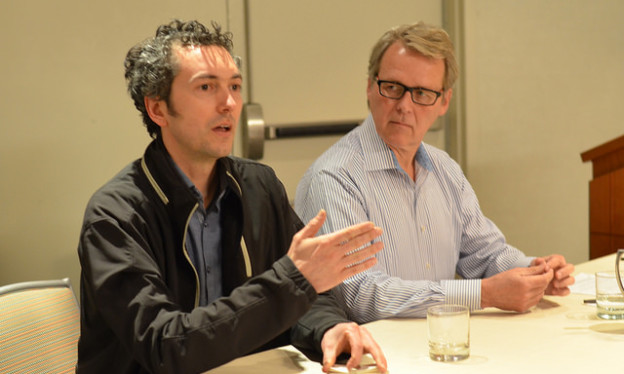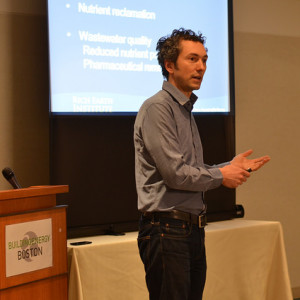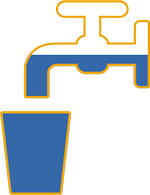Back to all articles
Going Beyond the Toilet at North East Sustainable Energy Alliance (NESEA)

Abe and William Strang talking toilets at NESEA conference, March 2016.
For 42 years, architects, engineers, designers, and construction industry leaders have gathered to share their dreams of an energy efficient and more sustainable built environment at the annual NESEA conference. In 2015 for the first time, conference organizers decided to include a focus on WATER and examine the urban water nexus. Rich Earth founders joined a panel for two sessions and presented our vision for source separation and urine nutrient reclamation.
On March 9th, 2016 we returned to NESEA for a second session, sharing the podium with William Strang, President of Operations at TOTO USA, to talk about toilet fixtures, water conservation, and the future of urine diversion. Nadav Malin, President and CEO of Building Green in Brattleboro, Vermont, served as the moderator for both years.
Based in Atlanta, Georgia, TOTO USA manufactures 20,000 toilets each month. William shared stories of his company’s innovations in low-flush design, involving advanced coatings that keep the bowl clean with minimal flushing, toilet trapways that mimic river flow, micro-flush urinals, and new regulations for 1.28 gallon flushes. We learned about TOTO’s strong focus on water conservation and how they are pushing the envelope of what is possible with a conventional flush toilet with their 1.0-gallon-flush model.
In contrast, the Rich Earth Institute’s message focused on changing the toilet paradigm from waste disposal to resource capture. Instead of asking how little water we could use to get rid of toilet “wastes”, Abe asked how our toilets and sanitation infrastructure could better harvest nutrients, especially from urine. He then described the components required for this alternate infrastructure, which the Rich Earth Institute is demonstrating on a pilot scale in Vermont: urine collection and storage, transport, sanitization, and application as fertilizer on farms.

The difference in approach between the two presentations was clear. TOTO focuses strictly on the toilets themselves. They sell millions of fixtures around the world, and their product needs to drop in as a no-fuss alternative to other conventional toilets. Their designs reduce flush volume to the lowest possible level that still carries toilet waste down the drain pipe and all the way to the sewer. This takes conventional toilet design as far as possible in terms of water conservation, but does not address the water pollution and resource waste that result from flushing human waste into the sewer.
The Rich Earth Institute envisions a more fundamental change in the way toilets function, where they shift from being waste disposal units to being tools for the harvest of resources. Our solutions require changing more infrastructure than just the toilet, so they take some planning and investment to implement–but by going beyond the toilet we can do so much more than conserve flush water.
At the moment, urine diversion and recycling is a very new idea in the U.S. The only porcelain, urine-diverting toilets currently available come from small manufacturers in Europe and require a minor plumbing retrofit to work in American buildings. But as developers and municipalities realize the long-term savings and environmental benefit of urine recycling, perhaps the demand for high-quality porcelain, urine-diverting flush toilets will inspire a domestic manufacturer to take green toilet innovation one step further.

